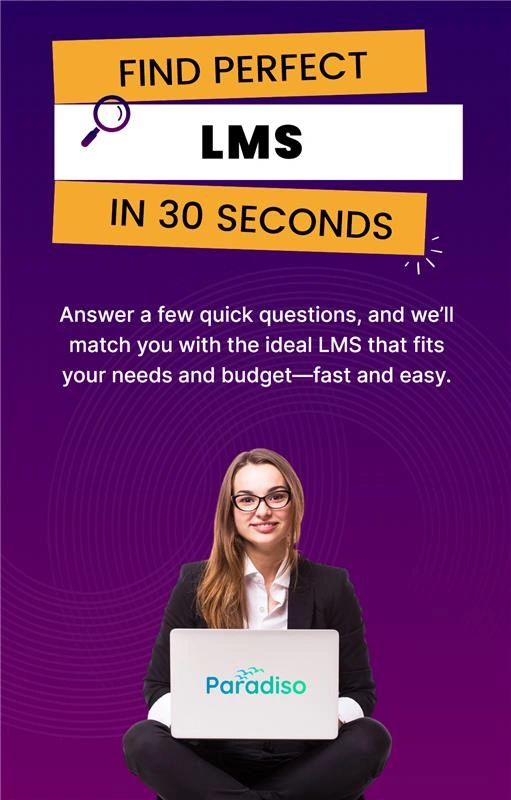Overcoming Challenges in Scaling Training Across Departments
Expanding training programs throughout multiple departments is vital for organizations seeking to strengthen workforce skills and ensure consistent development. Yet, this expansion often presents several obstacles that can impede effective deployment and adoption. Common challenges include maintaining high engagement levels, customizing content to meet diverse departmental needs, managing logistical complexities, and tracking progress comprehensively.
A significant issue is keeping training relevant and engaging for different teams, each with unique functions and learning preferences. Without tailored or adaptable content, employees may become disengaged, reducing overall training effectiveness. Additionally, coordinating schedules and delivering training on a large scale can become logistically challenging, risking delays and inconsistent delivery.
Data management and progress tracking further complicate matters. Organizations need reliable systems to monitor individual and departmental achievements, identify skill gaps, and assess competencies in real-time. Manual processes or outdated systems often fall short, leading to fragmented insights and delayed interventions.
Fortunately, leveraging modern Learning Management System (LMS) features can effectively address these challenges. Advanced LMS platforms offer scalable solutions such as customized learning paths, automation of administrative tasks, centralized tracking, and comprehensive reporting. These tools enable organizations to streamline training delivery, personalize the learning experience, and maintain consistency across all departments—making the scaling process smoother and more efficient.
Experience the smarter way to learn with Paradiso LMS!
Experience seamless learning, smart automation, and a powerful AI-driven LMS that scales with your growth.
🚀 Start Your Free LMS Journey Today
• Quick setup • Unlimited potential
Understanding Multi-Tenant Features in Free LMS: A Game-Changer for Multi-Department Training
Today’s organizational landscape demands flexible, scalable training solutions. One of the most transformative features for this purpose is multi-tenant architecture in a Learning Management System (LMS). Understanding how multi-tenant features operate within free LMS platforms is essential for organizations aiming to optimize training management and resource allocation.
What Is Multi-Tenant Architecture?
Multi-tenant architecture refers to a software design where a single application instance serves multiple clients or tenants, each with isolated data, configurations, and user roles. Unlike single-tenant systems requiring dedicated installations for each client or department, multi-tenant solutions enable managing multiple departments or business units within one unified platform.
This architecture ensures each department’s data and branding remain separate while sharing the underlying infrastructure. The result is significant cost savings and simplified management.
Why Are Multi-Tenant Features Crucial for Managing Multiple Departments?
For organizations with various departments—such as HR, sales, marketing, and compliance—multi-tenant LMS features offer:
– Autonomy and Customization: Each department can personalize its training portals, branding, and policies without affecting others.
– Efficient Resource Use: Administrators can allocate resources and set permissions tailored to each department’s needs.
– Unified User Management: Single sign-on (SSO) and centralized user control streamline access across departments.
– Scalability: Adding new departments or units becomes effortless, as the system can grow seamlessly.
Benefits of Multi-Tenant Capabilities in Free LMS Solutions
While many paid LMSs include multi-tenant features, increasing numbers of free LMS options are now embedding these capabilities, making advanced training management accessible to all. Benefits include:
– Cost Savings: Multiple departmental portals can be set up without extra licensing or infrastructure expenses.
– Enhanced Security and Privacy: Isolated environments protect sensitive departmental data.
– Simplified Administration: Central management with departmental autonomy reduces complexity.
– Quick Deployment: Rapid setup of department-specific portals supports fast organizational growth or restructuring.
🚀 Ready to See Paradiso LMS in Action?
Let’s show you how Paradiso LMS can work for you.
Why Does Multi-Tenancy Transform Training Management?
Incorporating multi-tenant features in free LMS platforms revolutionizes traditional training approaches. It allows organizations to deliver department-specific content, maintain consistent branding, boost engagement, and manage resources efficiently—all at zero extra cost.
In essence, leveraging multi-tenant architecture within a free LMS ensures scalable, secure, and tailored learning environments—ideal for organizations looking to expand their training capabilities without budget constraints.
Key Benefits of Multi-Tenant LMS for Organizational Growth
Implementing a multi-tenant Learning Management System (LMS) provides strategic advantages for organizations seeking to scale efficiently. By supporting multiple subsidiaries, departments, or brands within a single platform, a multi-tenant LMS simplifies management and promotes sustainable growth. The primary benefits include centralized control, cost savings, robust data security, and role-based administration, all crucial for expanding organizational reach.
1. Centralized Management for Efficiency
A key advantage is managing numerous entities from one central dashboard. This setup streamlines administration, allowing HR or training managers to oversee courses, user enrollments, and analytics across different departments effortlessly. Centralized management promotes consistency, reduces administrative work, and expedites new training initiatives—driving growth.
2. Cost-Effective Resource Sharing
Multi-tenant architectures cut costs significantly by sharing core infrastructure and license fees among all tenants. Instead of deploying separate LMSs for each department or branch, organizations access a single, unified platform, optimizing resource use. This efficient model lowers total ownership costs, making scaling more affordable.
3. Enhanced Data Security and Privacy
Data security is paramount in multi-tenant environments. Such systems incorporate strict data partitioning, encryption, and access controls to ensure tenant data remains isolated and safe from unauthorized access. Role-based permissions allow fine-grained control over content and user data, essential for maintaining compliance and building trust.
4. Role-Based Administration for Flexibility
Multi-tenant LMS supports role-based permissions, empowering different users—like super admins, department heads, or instructors—to manage their segments independently. This modular administrative structure enables each unit to operate autonomously while adhering to overarching standards, facilitating growth.
Supporting Organizational Expansion
Collectively, these benefits make multi-tenant LMS an indispensable asset for organizations aiming to grow. It simplifies management, reduces costs, safeguards sensitive data, and allows flexible control structures. Such systems accelerate deployment across new units and geographies, strengthening workforce development and compliance efforts.
Harnessing Multi-Tenant Features in Paradiso LMS to Achieve Your Training Goals
In today’s dynamic organizational environment, effective training management requires flexible, scalable, and secure solutions. Paradiso LMS stands out among free LMS options by leveraging advanced multi-tenant capabilities tailored to diverse departmental and business unit needs. This architecture enables organizations to deliver personalized learning experiences, enhance tracking capabilities, and safeguard data—empowering you to meet your training objectives confidently.
Understanding Paradiso LMS’s Multi-Tenant Architecture
Multi-tenancy in Paradiso LMS refers to its design where one instance supports multiple clients or tenants, each with isolated data and configurations. Organizations can create dedicated portals or sub-accounts for different departments, subsidiaries, or clients, all managed centralized. This setup guarantees that each tenant has its branding, content, and administration controls while benefiting from shared infrastructure’s cost-effectiveness.
Applying Multi-Tenancy to Support Training Strategies
1. Custom Content for Departments or Units
Paradiso LMS’s multi-tenant feature allows you to upload and assign specific training modules to each department’s needs. For instance, sales teams can access product training while HR handles compliance courses. This targeted approach improves relevance, engagement, and knowledge retention.
2. Independent Performance Monitoring
Each tenant can independently track training progress, completion rates, and assessments. This segregation enables precise performance insights without data overlap, helping managers identify skill gaps and measure training efficiency more accurately.
3. Data Privacy and Security
Data remains isolated within each tenant, reducing security risks. Paradiso LMS employs strict access controls and encryption to protect sensitive information, aligning with standards like GDPR or HIPAA, and ensuring compliance.
4. Scalability and Cost Savings
You can effortlessly add new tenants as your organization grows, without needing new systems. The shared infrastructure minimizes IT efforts and expenses, providing a cost-effective solution for multi-department management.
Real-World Examples of Multi-Tenant Success
Many organizations leverage Paradiso LMS’s multi-tenant features effectively. For example, a multinational company tailored learning paths for regional offices, leading to better compliance and localized content relevance. Similarly, a training provider manages multiple clients within a single platform, delivering bespoke solutions while ensuring strict data separation.
Final Thoughts & Practical Action Steps: Elevate Your Training with Multi-Tenant LMS Solutions
In today’s rapidly evolving digital world, scalable and adaptable training systems are vital. Multi-tenant Learning Management Systems (LMS) empower organizations to deliver personalized, centralized training efficiently across multiple departments, subsidiaries, or client networks. Managing numerous users and content within a single platform simplifies administration while ensuring consistent, high-quality learning experiences.
The importance of multi-tenant features extends beyond convenience—they enable growth by reducing costs, enhancing compliance, and streamlining monitoring. With this technology, organizations can serve diverse audiences, customize learning pathways, and control training programs effectively—making multi-tenant LMS solutions a catalyst for organizational expansion.
For those exploring budget-friendly options, free LMS platforms like Paradiso LMS often include essential multi-tenant features. These solutions allow organizations to pilot and deploy scalable training environments without significant capital investment. Transitioning to a multi-tenant LMS is a strategic step toward digital transformation and sustainable growth.

















